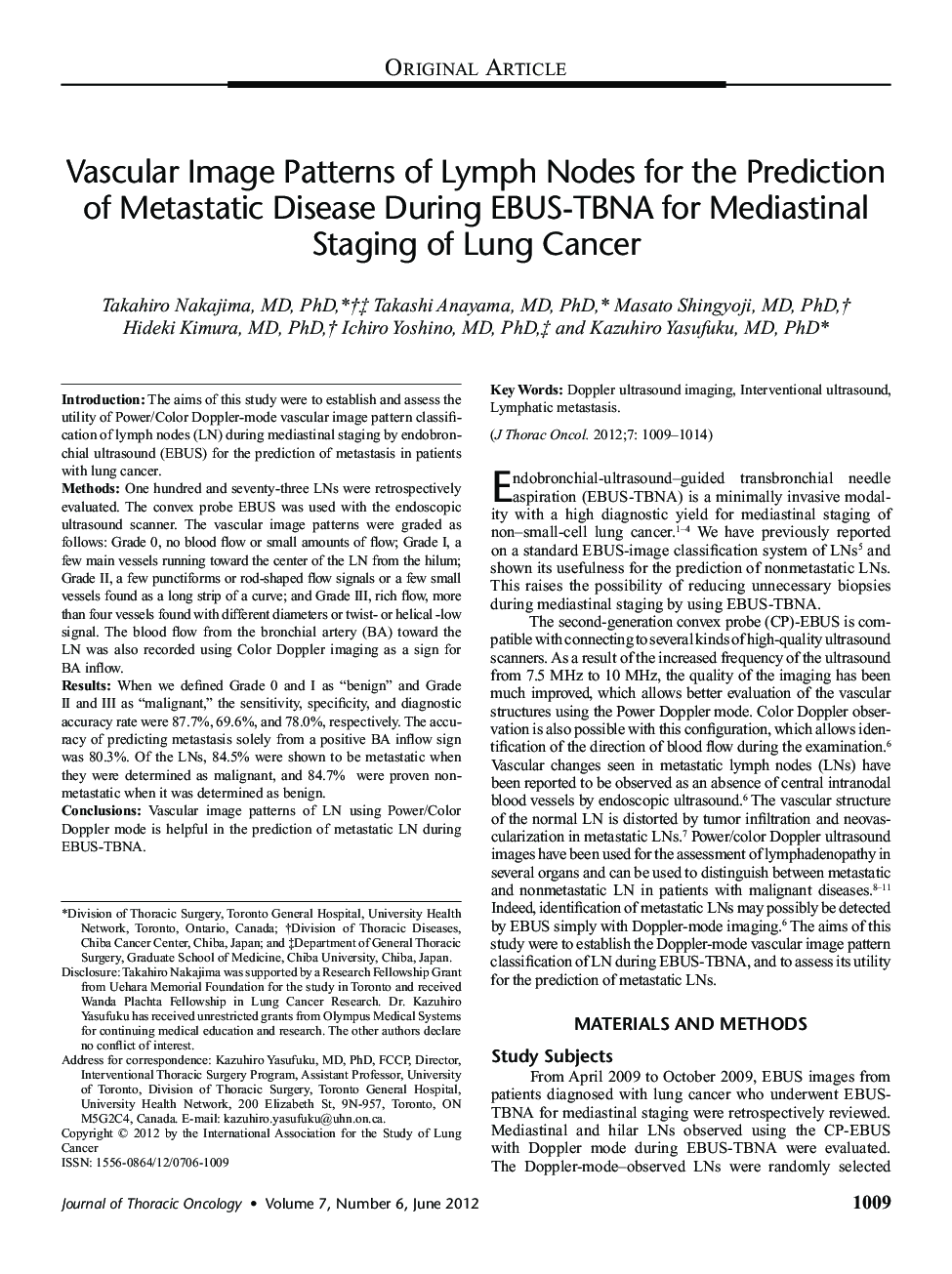| کد مقاله | کد نشریه | سال انتشار | مقاله انگلیسی | نسخه تمام متن |
|---|---|---|---|---|
| 3990659 | 1258744 | 2012 | 6 صفحه PDF | دانلود رایگان |

IntroductionThe aims of this study were to establish and assess the utility of Power/Color Doppler-mode vascular image pattern classification of lymph nodes (LN) during mediastinal staging by endobronchial ultrasound (EBUS) for the prediction of metastasis in patients with lung cancer.MethodsOne hundred and seventy-three LNs were retrospectively evaluated. The convex probe EBUS was used with the endoscopic ultrasound scanner. The vascular image patterns were graded as follows: Grade 0, no blood flow or small amounts of flow; Grade I, a few main vessels running toward the center of the LN from the hilum; Grade II, a few punctiforms or rod-shaped flow signals or a few small vessels found as a long strip of a curve; and Grade III, rich flow, more than four vessels found with different diameters or twist- or helical -low signal. The blood flow from the bronchial artery (BA) toward the LN was also recorded using Color Doppler imaging as a sign for BA inflow.ResultsWhen we defined Grade 0 and I as “benign” and Grade II and III as “malignant,” the sensitivity, specificity, and diagnostic accuracy rate were 87.7%, 69.6%, and 78.0%, respectively. The accuracy of predicting metastasis solely from a positive BA inflow sign was 80.3%. Of the LNs, 84.5% were shown to be metastatic when they were determined as malignant, and 84.7% were proven nonmetastatic when it was determined as benign.ConclusionsVascular image patterns of LN using Power/Color Doppler mode is helpful in the prediction of metastatic LN during EBUS-TBNA.
Journal: Journal of Thoracic Oncology - Volume 7, Issue 6, June 2012, Pages 1009–1014